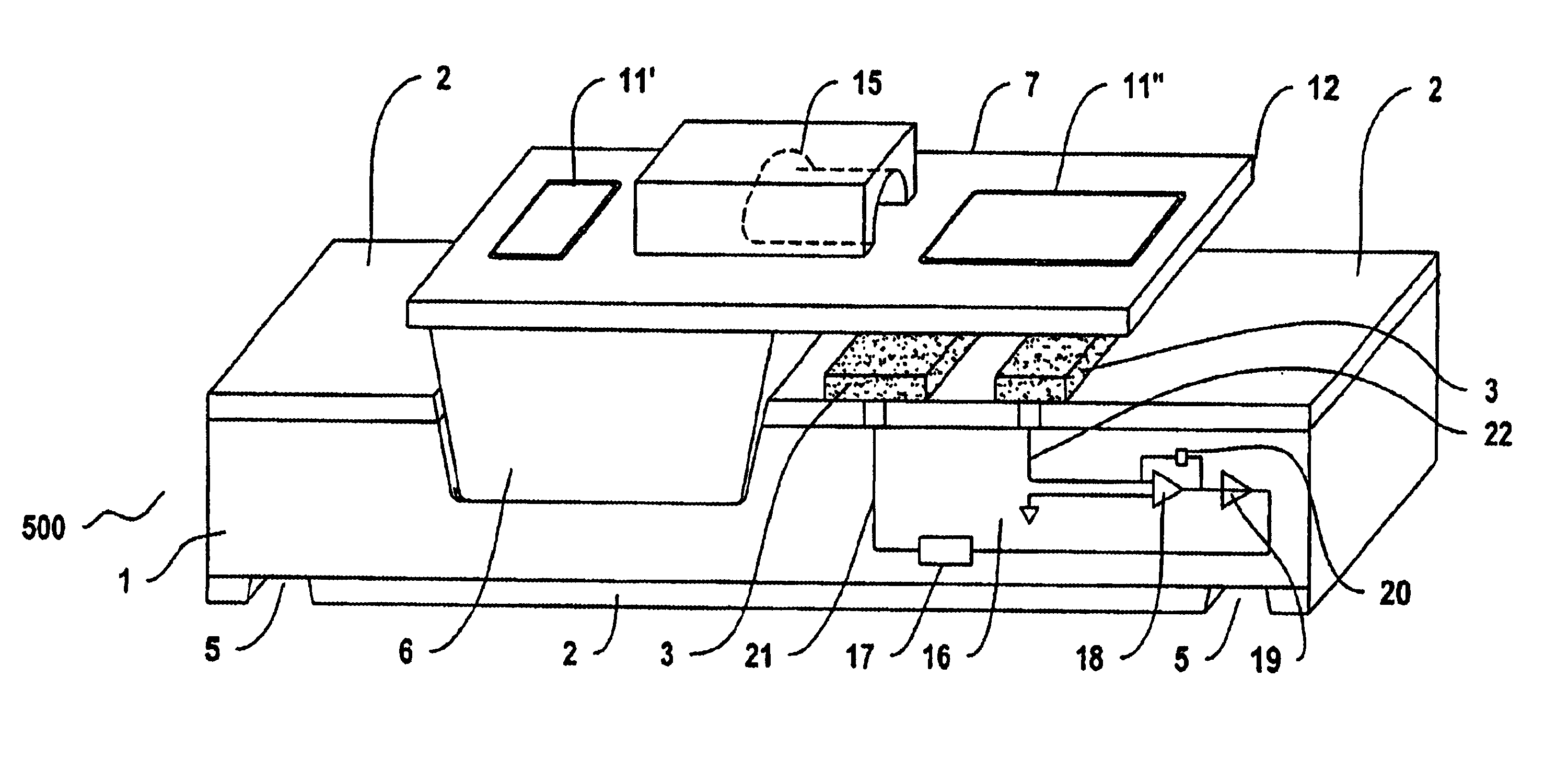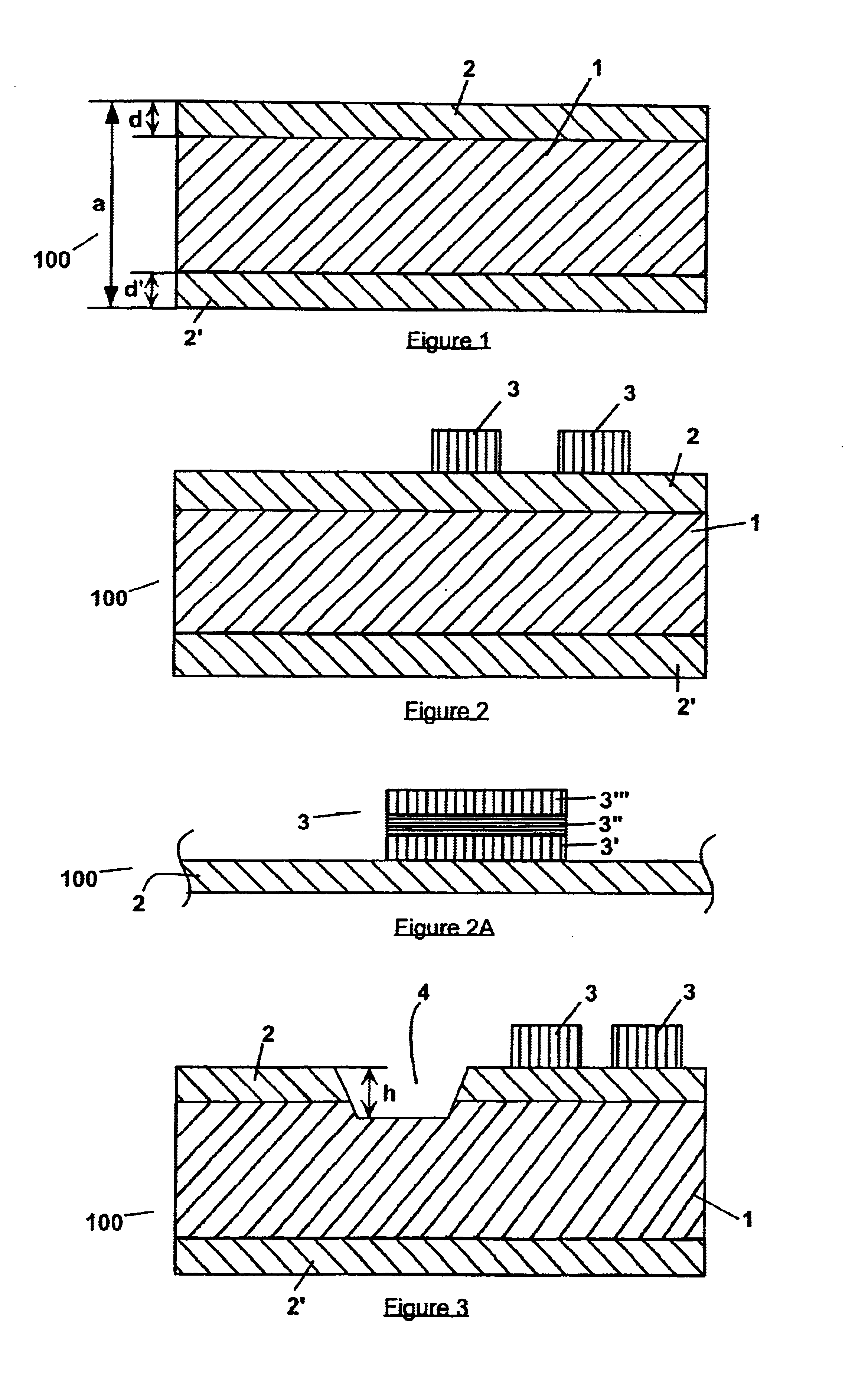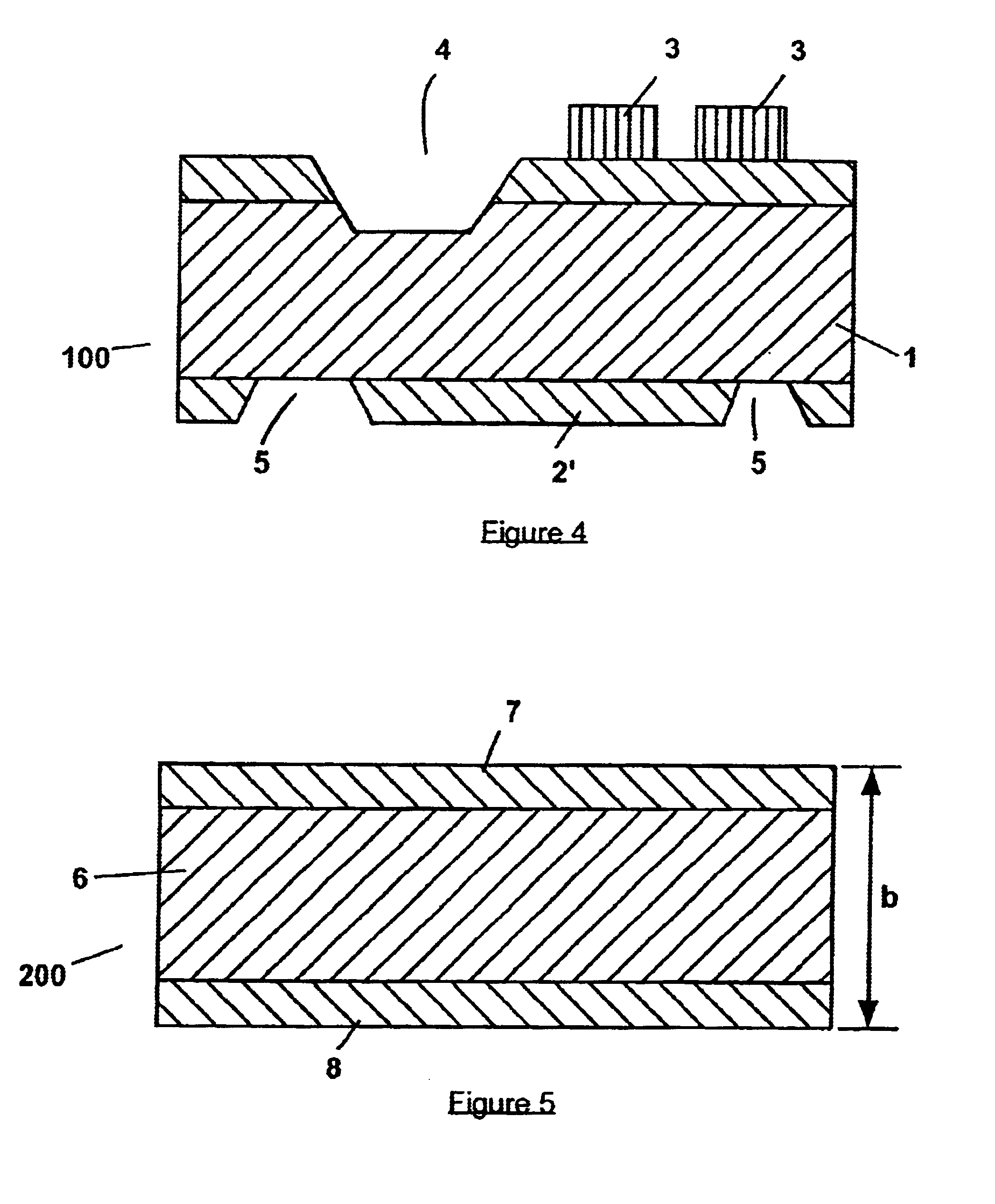Method of fabrication of a micro-channel based integrated sensor for chemical and biological materials
a micro-channel and biological sensor technology, applied in microstructural technology, microstructural devices, liquid/fluent solid measurement, etc., can solve the problems of limited specificity of metal coatings, inability to detect chemical and biological materials, and increase size and manufacturing costs. , to achieve the effect of enhancing the selectivity of sensors
- Summary
- Abstract
- Description
- Claims
- Application Information
AI Technical Summary
Benefits of technology
Problems solved by technology
Method used
Image
Examples
Embodiment Construction
[0048]The sensor which is the subject matter of the present invention preferably comprises three silicon wafers that are mechanically bonded together to produce the final structure. The fabrication process of the sensor is as follows.
[0049]As shown in FIG. 1, the starting wafer or substrate comprises a relatively thick wafer 100. The wafer 100 comprises a layer 1 of a semiconducting material. The semiconducting material is preferably an n-type silicon, and alternatively at least one of a Group III-Group V element. The top side of wafer 100 comprises an insulating material 2, preferably silicon oxide, or silicon nitride, Si3N4, or a combination thereof. The bottom side of wafer 100 comprises a masking material 2′, preferably, Si3N4.
[0050]Total thickness, a, of the wafer 100 is within a range of between about 650 micrometers and about 850 micrometers, preferably about 750 micrometers. Each of the layers of the insulating material 2 and of the masking material 2′ has a thickness, d or ...
PUM
| Property | Measurement | Unit |
|---|---|---|
| thickness | aaaaa | aaaaa |
| thickness | aaaaa | aaaaa |
| thickness | aaaaa | aaaaa |
Abstract
Description
Claims
Application Information
 Login to View More
Login to View More - R&D
- Intellectual Property
- Life Sciences
- Materials
- Tech Scout
- Unparalleled Data Quality
- Higher Quality Content
- 60% Fewer Hallucinations
Browse by: Latest US Patents, China's latest patents, Technical Efficacy Thesaurus, Application Domain, Technology Topic, Popular Technical Reports.
© 2025 PatSnap. All rights reserved.Legal|Privacy policy|Modern Slavery Act Transparency Statement|Sitemap|About US| Contact US: help@patsnap.com



